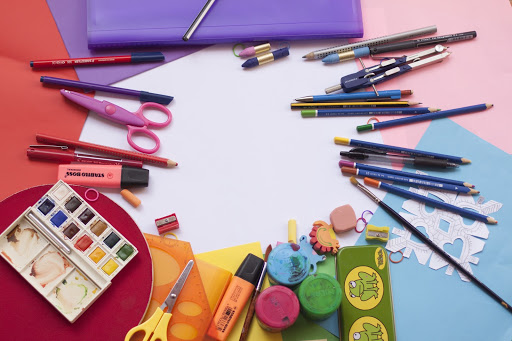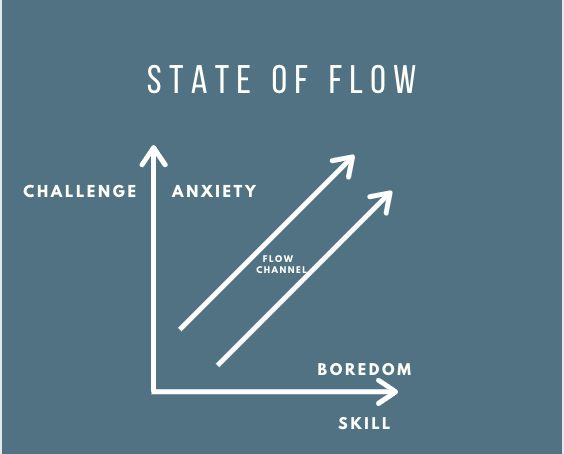
Have you ever been so engrossed in a task that when you pause to look at the time, thinking it has only been a few minutes, you see that hours have passed? Take for example my Saturday routine: I spend the entire morning working on schoolwork. This past Saturday, I was deep into analyzing data I had collected. I swear it felt like 30 minutes had passed, but when I paused to get a snack, I saw 3 hours had gone by! Wait, what? How could that have happened? How did I not hear my 3 month old daughter cry? This experience of being completely and 100% “in the zone” is referred to as a state of flow.

Flow is a term coined by Mihaly Csikszentmihalyi, which refers to total immersion in a task. You are completely invested, focused, and engaged in the activity at hand. Think of marathon runners: they run 26 miles and usually don’t experience pain until after they cross the finish line and stop running. It’s because while they were running (doing something they enjoy and completely engrossed in the task), they were in a state of flow. Note: I can’t relate to this because I don’t like running (I prefer Jazzercise), but I have heard from my brother who is an avid runner!

Research from Csikszentmihalyi supports that flow in education has many benefits such as increasing academic confidence, happiness, intrinsic motivation, engagement, performance, love for learning, mastery of skills, and even creativity! As teachers, don’t we all want our students to be so deeply immersed in their learning that they completely lose their sense of time?
Jill Suttie from Berkeley University shares some research-based tips to foster a learning environment where students can experience flow:

- Challenge kids. For students to experience flow of learning, the task or activity has to be one level above a student’s current ability level. If a task is too demanding, it will cause the student anxiety and the student will most likely give up. If a task is too simple, students will become bored. It’s a balance between creating activities that challenge students enough without overwhelming them. In some cases, an activity might need to be chunked into smaller pieces to provide balance.
- Make Activities Relevant. Activities must connect to the lives of students. When students see the connection and relevance of an activity, they are more likely to engage in the activity. When students are engaged in an activity, they can enter into a stage of flow.

- Offer Choice. Research on motivation tells us that when people are given autonomy, they feel more competent, confident, and motivated. They also feel less stressed and more engaged in the work when they feel ownership over the activity.
- Provide Hands-On Learning Experiences. Design activities where students can create, solve, and take an active role in their learning. When students are active in the process, it is easier for them to get into a state of flow.

- Set Goals and Provide Feedback. When trying to create conditions to foster flow, an activity needs to have clear goals. Clear goals provide students with structure and direction, which help encourage flow. Additionally, students will need feedback along the way to let students know if their efforts are helping them reach the goal, and if not, feedback will help them adjust to stay in flow.
How can you commit to fostering flow in your classroom this week? I challenge you to take one of the research-based tips to implement into your setting. Share your experiences with us on social media by tagging @KaneCountyROE!
